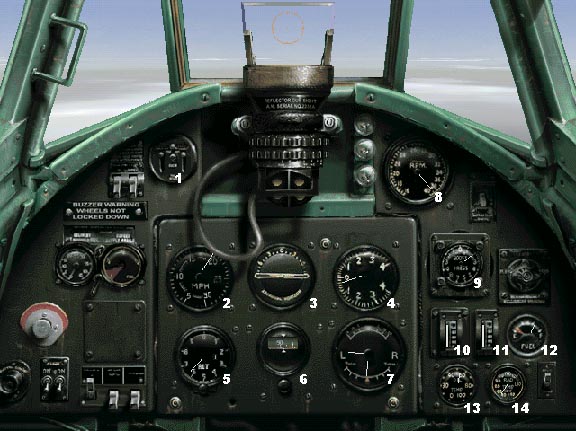
European Air War

Hurricane Mk.I
With over 15,000 Hurricanes built, the aircraft served on virtually every front; even remaining in front-line service as a ground-attack aircraft well after production ended. During the Battle of Britain, the Hurricane downed more Luftwaffe aircraft than any other aircraft type, accruing over 1,500 confirmed victories.
Despite its record, the Hurricane is slow, under-powered, maneuvers poorly, and lacks acceleration. The early Bf109s and Bf110s had little problem contending with the Hurricane. During the Battle of Britain, the Hurricane's main advantage came from fighting over friendly territory against opponents operating at the very edge of their combat range. On the average, though, the Hurricane was outclassed by most of its air-to-air opponents.
The Hurricane is a relatively stable aircraft and generally less difficult to fly than the Spitfire. The Hurricane reaches maximum power between 16,000 to 18,000 feet, but performance falls off sharply above 18,000 feet. Typically, the Hurricane should engage inbound bombers while Spitfires engage the escorting Bf109s.
Hawker Hurricane Mk I
- Wingspan: 49 ft. 0 in.
- Length: 31 ft. 5 in.
- Height: 13 ft. 2 in.
- Wing Area: 258 sq. ft.
- Engine: Rolls-Royce Merlin III rated at 1,030 hp.
- Fuel: 110 gal. internal
- Loaded Weight: 6,600 lb.
- Wing Loading: 26 lb./sq. ft.
- Maximum Speed: 316 mph.
- Service Ceiling: 33,200 ft.
- Rate of Climb: 2,300 ft./min
- Combat Radius: 140 miles
- Armaments: 8 x .303 cal. Browning machine guns
- Ammunition: 334 rds/gun

1. Landing Gear Position Indicator
2. Airspeed Indicator
3. Artificial Horizon
4. Rate of Climb Indicator
5. Altimeter
6. Compass
7. Turn and Bank Indicator
8. Tachometer
9. Manifold Pressure Gauge
10. Oil Pressure
11. Fuel Pressure
12. Fuel Gauge
13. Oil Temperature Gauge
14. Coolant Temperature Gauge
Notes: Once the aircraft caught fire, it was quickly engulfed in flames. Many pilots suffered the effects of 'Hurricane burns'. The Hurricane is only capable of being flown in a clean configuration.
This material was included in the original 1998 release of European Air War by Microprose.
